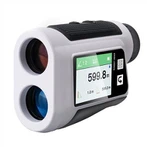Imaging Methods of Bright-Field and Dark-Field in Fluorescence Microscopy
(1) Bright field imaging (BFI) method, which only allows the transmitted electron beam in the paraxial region to pass through the objective aperture, forming a dark image on a bright background. The smaller the aperture of the objective aperture, the greater the contrast of the bright field image; (2) Dark field imaging (DFI) is a technique that allows only a portion of the large angle scattered beam or a certain diffraction beam of the crystal to pass through the objective aperture, while blocking the transmitted beam. This forms a bright graphic image on a dark background. This dark field imaging method can improve the contrast of images and is an important imaging technique.
There are roughly four methods for achieving dark field images using Leica fluorescence microscopes: (1) maintaining vertical illumination along the optical axis while moving the objective aperture; (2) The use of oblique illumination to capture scattered beams in the direction of the optical axis is called Central Dark Field Imaging (CDFI); (3) An objective aperture with a central beam stop and a circular transparent area; (4) Use a circular transparent condenser lens for light sensing and a central circular aperture for the objective lens. The * method here is the most simple, but it uses electronic imaging in the distal sleeve area, so the aberration is large and the image quality is not very good. The second method can avoid the above drawbacks, but the Leica fluorescence microscope's objective aperture only receives a small portion of scattered diffracted electrons, resulting in lower efficiency. The side of the aperture is often subjected to a large amount of electron bombardment, which can easily cause asymmetric contamination and affect image quality. The annular objective lens has been improved in this aspect, but the disadvantage is that it is difficult to produce and it is difficult to achieve complete axial symmetry. Given the relatively relaxed requirements for the lighting system, the latter solution can be adopted, which involves adding an annular aperture at the condenser to provide hollow beam illumination for the sample. The effect of this device. Its image resolution can be close to that of bright field images, while the contrast is greatly improved.






